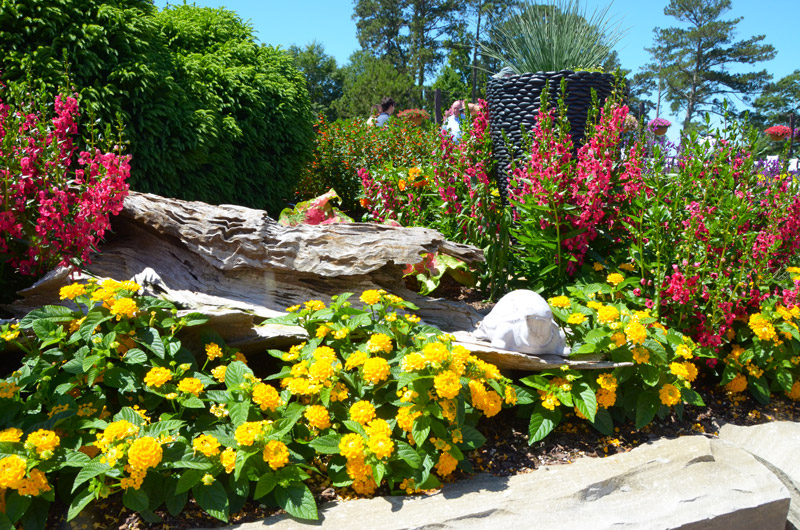The 15-Second Trick For Hilton Head Landscapes
The 15-Second Trick For Hilton Head Landscapes
Blog Article
Some Of Hilton Head Landscapes
Table of ContentsThe Main Principles Of Hilton Head Landscapes Hilton Head Landscapes for DummiesGetting The Hilton Head Landscapes To WorkGetting My Hilton Head Landscapes To WorkThe 15-Second Trick For Hilton Head LandscapesHilton Head Landscapes for DummiesThe Hilton Head Landscapes Diaries
Line produces all forms and patterns and can be made use of in a range of methods the landscape. Line in the landscape is produced by the edge in between two materials, the summary or shape of a type, or a lengthy direct attribute. Lines are a powerful device for the designer due to the fact that they can be utilized to develop an unlimited selection of shapes and forms, and they regulate activity of the eye and the body.

Lines can have one or more characteristics, such as those explained below, however they typically offer various objectives. Number 1. Lines in the landscape - bluffton landscaping. The buildings of lines identify just how people react to the landscape, both emotionally and literally. Straight lines are structural and powerful; they produce an official character, are typically related to an in proportion layout, and lead the eye directly to a prime focus.
What Does Hilton Head Landscapes Do?
Curved lines create a casual, natural, kicked back character that is connected much more with nature and asymmetrical balance. Curved lines move the eye at a slower pace and include secret to the area by producing concealed views.
Vertical lines in the landscape include high, slim plant material, such as trees, or tall frameworks, such as an arbor or a bird residence on a post. Straight lines relocate the eye along the ground airplane and can make a space feel bigger. Reduced lines are a lot more suppressed and produce a feeling of remainder or repose.
Some Known Questions About Hilton Head Landscapes.
Low lines are developed by low garden walls, sidewalks, and short bushes. Lines are used to attract forms on a plan. In plan sight, they specify plant beds and hardscape areas. Lines are additionally created by the upright forms of developed features and plant product. There are 3 main line types that develop form in the landscape: bedlines, hardscape lines, and plant lines.
Bedlines attach plant material to your home and hardscape because the eye follows the line, moving the look via the landscape. Hardscape lines are created by the edge of the hardscape, which defines the constructed structure. Line can likewise be produced by lengthy and slim materials, such as a fence or wall.
9 Simple Techniques For Hilton Head Landscapes
Kind is discovered in both hardscape and plants, and it is typically the dominant aesthetic component that spatially arranges the landscape and commonly establishes the design of the yard. The kind of structures, plant beds, and garden accessories additionally figures out the total type theme of the garden. Official, geometric types include circles, squares, and polygons.
Plants develop form in the yard via their details or silhouettes, however form can additionally be specified by a space or unfavorable area between plants - hilton head landscapers other (https://h1tnhdlndscps.wordpress.com/2024/07/03/transform-your-outdoor-space-with-hilton-head-landscapers/). Circles can be cycles, or they can be split into half circles or circle sections and combined with lines to develop arcs and tangents
The smart Trick of Hilton Head Landscapes That Nobody is Talking About
Circles can also be extended into ovals and ellipses for even more selection and rate of interest. Circles are a strong style form due to the fact that the eye is always attracted to the center, which can be utilized to stress a focal point or attach other kinds. Figure 2. Circular kinds in hardscape and lawn panels.
The square form can likewise be fractional and secondhand consistently to develop a grid pattern. Unlike circles, squares are more powerful on the edges, which can be aligned or overlapped to create special patterns and even more complicated types. Polygons are many-sided kinds with straight sides. Triangles, for instance, are three-sided polygons.
Meandering lines commonly mimic the natural course of rivers or streams and can be called smooth lines with deeply rounded undulations. Meandering lines (Figure 3) work well for pathways, plant bedlines, and dry stream beds. Meandering lines can add passion and enigma to a yard by leading customers around edges to uncover brand-new sights and areas.
10 Easy Facts About Hilton Head Landscapes Explained

Typical plant forms are well developed and standardized, as kind is the most constant and recognizable attribute of plants. Form can also be produced through the massing of plants, where the total mass creates a various form than a specific plant.
An extremely different form needs to be used with careone or 2 work well as a centerpiece, but as well many wreak havoc. Natural plant kinds, instead of over-trimmed forms, need to establish the mass of the composition. The importance of total type is basically reliant on the viewing perspectivethe type of a tree can appear rather various to an individual standing under the cover versus viewing the tree from a range in an open area.
5 Simple Techniques For Hilton Head Landscapes
Plant kinds additionally develop and define deep space or open spaces between the plants, producing either convex or scooped kinds in the voids. High-arching tree branches normally develop a concave open room under the branches, and a rounded canopy with low branches fills the space to create a convex form in the open space under the tree.

Report this page